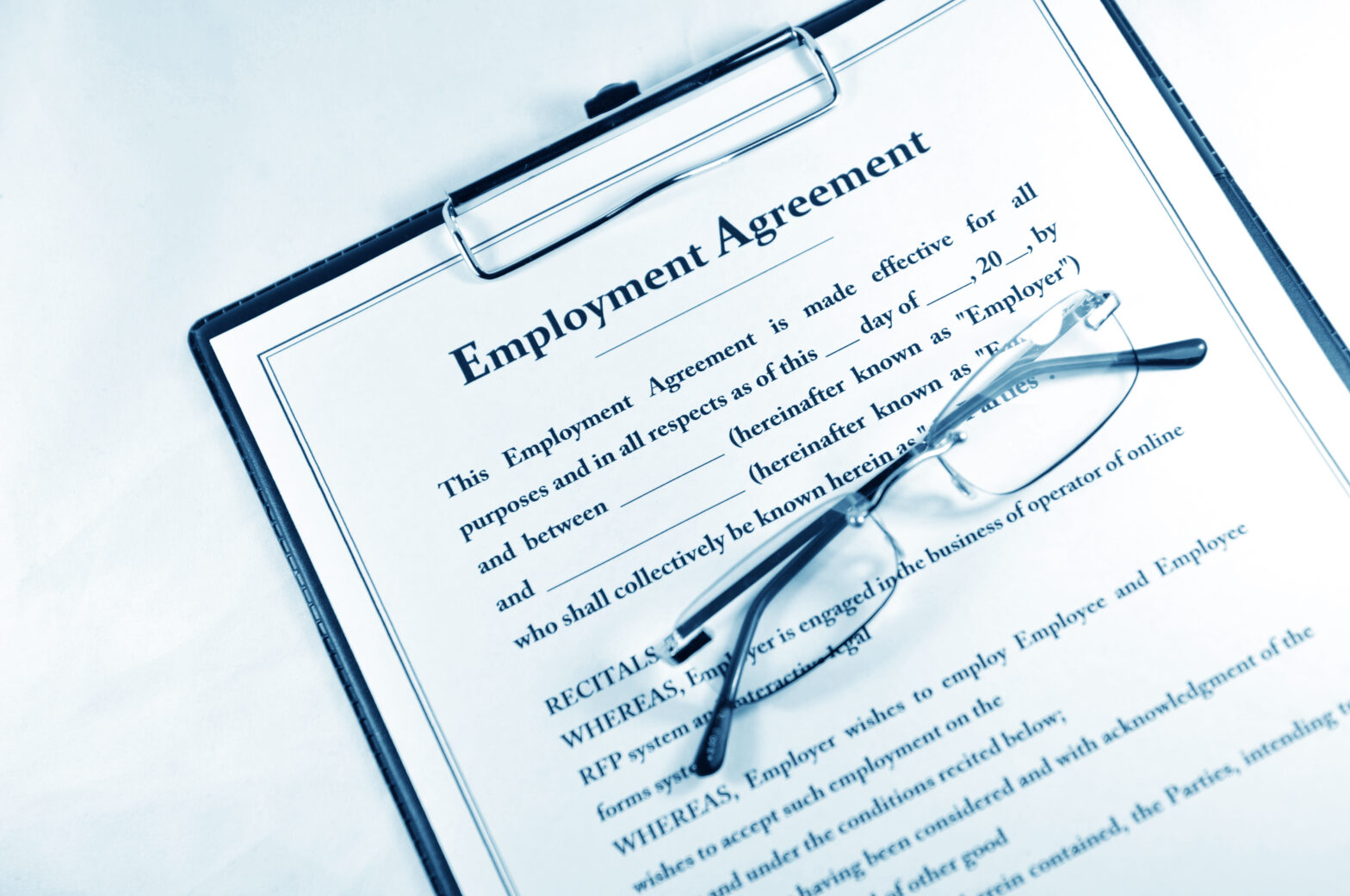These days, the telephone interview might not go far enough in finding candidates. As a result, many employers have been turning video platforms like Zoom.
The advantage to Zoom is that lots of people use it and know how it works. However, you miss out on certain upsides in a video interview that you would get in a face-to-face job interview, like reading social cues and body language.
To help you get the most of your Zoom job interviews, let’s take a look at what you need to do as an employer before, during and after the interview.
Before the interview
The first step is the all-important preparation you do when planning your interview.
Provide instructions for your candidate
As soon as you decide a date and time with the candidate, send them details of how to access the meeting. If you have several candidates or plan to recruit for multiple positions, a template is a wise idea. Tell them where they can download Zoom (if they don’t have it already), making sure you include the link to their meeting along with the password.
Give them a phone number in case there are any tech issues on the day. Schedule more time than a face-to-face interview to leave leeway for these potential tech issues too. And though you may be working from a template, use different meeting rooms and meeting links for each candidate. Using the same one could risk overlap for the next candidate who signs in early and interrupts the interview in progress – not a great look for your company.
Be clear on dress code for the interview. Just because it’s a home-based set up, it doesn’t have to be a casual interview. Zoom also has a screen share function, so ask the candidate to send over their CV, cover letter and any other relevant documents that you wish to discuss in the interview.
As for you, it may sound obvious, but prepare your questions ahead of time, tailoring your questions to the current situation if necessary.
James O’Dowd, managing partner of Patrick Morgan, said: “Employers should highlight what’s available to new employees in terms of team building and support during current lockdown circumstances and remote working, but also what they could expect in a ‘normal’ working day, once things return to a new normal.”
He also said that the virtual meeting can be an opportunity to assess a candidate’s IT and presentation skills in one. For example, the share screen functions allow the candidate to present past work or even a pre-prepared proposal. “These presentation skills are vital, as they demonstrate how a candidate would engage with colleagues and clients,” he added.
Finally, warn the other people in your home that you’re carrying out an interview to minimise distractions.
Update to the latest version of Zoom and your operating software
Doing this ahead of time means that you won’t be surprised by an impromptu update as you’re logging in to interview your candidate, avoiding embarrassing delays.
Clear your screen and turn off your notifications
Your computer will run a lot more smoothly if you have fewer tabs open. Turning your email notifications off and switching your phone to silent will ward off distracting beeps and rings and the interviewee will feel like they’re getting all of your attention.
Check positioning, audio and video performance
If you’re on a laptop, make sure it’s propped up correctly. The light next to your camera should be in line with your eyes. Your head, neck and mid-body should be in shot.
Zoom allows you to test your audio and video before the interview begins so make good use of it.
During the interview
Setting an agenda can clear up how the interview is going to proceed and help put the candidate at ease.
Alex Hattingh, chief people officer for Employment Hero, said: “Always start the interview by telling the candidate your role, what the format is and the backup plan if the video tech fails. This helps frame the rest of the meeting and to help both the interviewer and the interviewee get in the zone.”
Mute yourself when other people are speaking
Muting yourself means the microphone isn’t picking up background noises like traffic and pets. Ask your interviewee and anyone else on the call to do the same.
Look into the camera, not at the other person/people
Though it can be tempting to look at the other people on the call, it’s best to look straight into the camera. It feels unnatural at first, but looking at the interviewee while you’re speaking to them creates greater connection and rapport.
Be in a room with good lighting and a lot of soft furnishings
The lighting allows you to be seen clearly and the soft furnishings will absorb sound and reduce echo.
Think about your background
You’ll have seen this a lot over the course of the pandemic through television interviews. Bookshelves, quirky trinkets or noticeboards make interesting backgrounds, but keep enough distance so that other people in the meeting can’t clearly see book titles or what’s on the noticeboard.
Set up your station so that the back of your computer is facing the window. This means you get plenty of light in, as per the previous point, but it won’t obscure your face and make you look like a silhouette.
Be careful with wording and body language
With body language, it’s best to remain natural but look professional. Nod and smile to show that you’re listening.
There can be dips and delays on Zoom so make sure the candidate has finished their response before you jump in and ask your next question. Jokes and humour also don’t seem to work as well on video chat so choose your words carefully.
Even though the interview will lack the social cues of a face-to-face interaction, you can still pick up valuable information from the interviewee – do they maintain eye contact and display open body language? Even small talk can help you to gauge how a potential employee would fit into your company culture:
Lana Eardley, operations and talent manager for KC Communications, said:
“Remember to have a chat. In a normal interview, there is likely to be an element of more casual conversation to get a feel for the person and it’s equally as important to replicate this to understand how they’d fit in with the dynamic of the team, get a feel for their personality with the formality of interview questions and to also to help relax the candidate.”
Hiring international employees
Sometimes you may want to hire outside the UK – perhaps because you have other staff overseas and want to expand in that country or because the overseas candidate is simply the best for your business.
In any case, there’s a lot more to consider. If you’re hiring internationally, think about time difference, labour laws and taxes.
Alex Hattingh, chief people officer for Employment Hero, shares her advice:
1. Timing is everything
It sounds obvious but finding a time to meet across different time zones can often be a challenge. Always send a few options for your candidate to choose from and send a calendar invite as soon as the time is confirmed.
2. Fewer acronyms, tyvm!
Avoid the use of acronyms as they might not be as well known in other countries/markets.
3. Know the lay of the land
It pays to do some research. Find out more about general best hiring practices for the home countries of your international candidates. For instance, some markets like Australian and NZ are a lot more relaxed whereas some parts of Asia and Europe are a lot more formal. There are also rules for certain countries (prime example of this is that in the US, you are not supposed to ask someone what their current salary is, only their expectations).
I would also recommend researching what the role title is in the target market(s). You’ll soon find this makes a massive difference in the quality of candidates applying for your job posting.
4. Make time for discussion
Leave extra time at the end of the interview to talk the candidate through what your plans are for their market and how things like training, onboarding and time differences will work.
5. Learn the local employment laws
Before you take the plunge and hire an international employee, I’d also recommend you look into the total cost of hiring that employee and the local employment laws. Many other markets also have obligatory pension funds that are higher and more confusing than the ones in the UK (Superannuation in Australia, CPF in Singapore, for example).
After the interview
It’s not just the interviewee who should follow up – it’s a good reflection on you and your business to thank them for attending the interview and that you will let them know your decision in a timely manner.
James O’Dowd, managing partner of Patrick Morgan, suggests creating a 15-minute block in the diary after interviews to allow yourself time to collate observation, notes and feedback on the candidate.
“With schedules so tightly packed as we shift from one virtual meeting to the next, it is easy to move on and forget smaller yet vital details from an interview. The best time to note feedback is directly after an interview, otherwise thoughts get lost,” he said.
Alternatives to Zoom for job interviews
There’s a chance that you might not like Zoom or want to use a platform with more sophisticated features for your interviews. Here are a few other options on the market.
With Cisco Webex, you can email an invite to a participant from the dashboard. It provides contact information to the interviewee in advance too. Do your interviews with HD video and audio and record your meetings to the cloud with an automatic transcription.
GoToMeeting sends joining instructions for those who are outside your organisation and don’t use the platform. Access meetings in one click and use the virtual whiteboard for a more collaborative interview set up.
Google Meet is free for everyone and is built for secure business meetings. Interviewees can join from any web browser with no software to install. It adjusts to your network speed and has live captions for easier understanding, especially if one of you is in a noisier environment.
Only participants approved by the meeting owner can get in and they can join by phone.
BlueJeans Meetings uses Dolby Voice and HD video and has real time closed captions like Google Meet. It also has a smart meetings function to highlight parts of the interview, as well as annotations and digital whiteboards for presentations.
Which Zoom tips and techniques should I be using for my job interviews?
There’s a lot to take in here, but if you follow the steps above, your interviews should be relatively hiccup-free. Some of the tips listed are common sense too, so though it looks like a lot, the process is straightforward.
If you’re new to this and unsure about what to do, try a couple of mock Zoom job interviews with your colleagues before the real thing.





